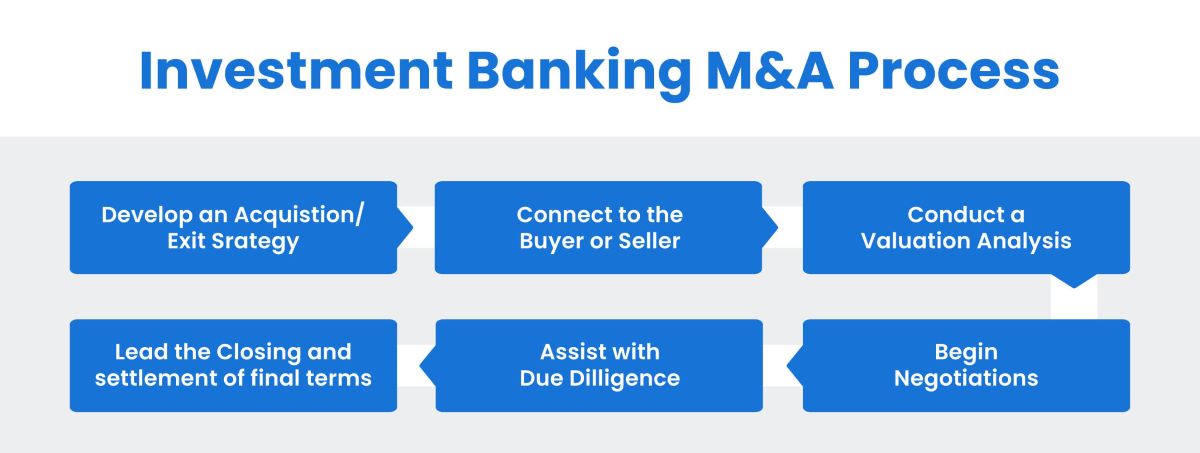Home>Finance>What Are Some Ways In Which The Capital Structure Decision Can Affect The Value Of Operations?


Finance
What Are Some Ways In Which The Capital Structure Decision Can Affect The Value Of Operations?
Modified: February 21, 2024
Learn how the capital structure decision in finance can impact the value of operations and maximize returns for your business.
(Many of the links in this article redirect to a specific reviewed product. Your purchase of these products through affiliate links helps to generate commission for LiveWell, at no extra cost. Learn more)
Table of Contents
Introduction
Welcome to the world of finance, where every decision can have a significant impact on the value and success of a company. One such crucial decision is the capital structure decision. The way a company chooses to finance its operations can greatly influence its financial health and performance. In this article, we will explore the concept of capital structure and delve into the various ways in which this decision can affect the value of operations.
Capital structure refers to the composition of a company’s financial resources, specifically the mix of debt and equity used to finance its operations. It involves determining the optimal combination of debt and equity that will result in the lowest cost of capital and maximized value for shareholders.
The importance of the capital structure decision cannot be overstated. It directly affects the company’s ability to fund growth initiatives, meet financial obligations, and achieve a competitive advantage in the market. By understanding the ways in which the capital structure decision can impact the value of operations, companies can make informed choices that align with their strategic goals and financial objectives.
So, how does the capital structure decision influence the value of operations? Let’s explore some key factors:
Definition of Capital Structure
Before we delve into the ways in which the capital structure decision can affect the value of operations, let’s first establish a clear understanding of what capital structure actually means.
Capital structure refers to the way a company finances its activities by utilizing a mix of debt and equity. Debt represents borrowed funds, typically obtained through bank loans, bonds, or other forms of borrowing. Equity, on the other hand, represents the ownership interest of shareholders in the company.
The capital structure decision involves determining the optimal balance between debt and equity to finance a company’s operations. This decision is influenced by various factors, such as the company’s risk appetite, cost of capital, financial stability, and growth objectives.
A company’s capital structure can be classified into two main categories: debt-heavy and equity-heavy. A debt-heavy capital structure means that a significant portion of the company’s financing is derived from debt, whereas an equity-heavy capital structure indicates a higher reliance on equity financing.
It is important to note that there is no “one-size-fits-all” approach to capital structure. Each company must carefully evaluate its own financial situation, industry dynamics, and strategic goals to make an informed decision on the optimal mix of debt and equity.
By understanding and strategically managing their capital structure, companies can achieve several objectives, including:
- Optimizing the cost of capital
- Maintaining financial flexibility
- Minimizing financial risk
- Maximizing shareholder value
Now that we have a clear definition of capital structure, let’s explore the ways in which the capital structure decision can impact the value of operations.
Importance of Capital Structure Decision
The capital structure decision is of paramount importance for any organization, as it directly influences the financial health and performance of the company. Here are some reasons why the capital structure decision holds significance:
- Optimizing Cost of Capital: The cost of capital is the cost a company incurs on its debt and equity financing. By making the right capital structure choices, a company can minimize its overall cost of capital. This is crucial because a lower cost of capital enables the company to undertake profitable investment opportunities and maximize shareholder returns.
- Maintaining Financial Flexibility: A well-structured capital mix provides financial flexibility to the company. When there are both debt and equity financing options available, it allows the company to adapt and respond to changing market conditions and financing needs. This flexibility can help the company seize growth opportunities and navigate through challenging times.
- Minimizing Financial Risk: The capital structure decision can help determine the level of financial risk a company is exposed to. Excessive debt can increase the financial risk, as the company must meet interest payments and repay principal amounts regardless of its financial performance. On the other hand, a higher equity component can provide a cushion against financial distress and reduce the risk of bankruptcy.
- Maximizing Shareholder Value: The ultimate goal of any company is to maximize shareholder value. The capital structure decision plays a crucial role in achieving this objective. By striking a balance between debt and equity financing, a company can optimize its capital structure to enhance its valuation and improve shareholder returns.
In summary, the capital structure decision holds immense importance as it affects the cost of capital, financial flexibility, risk exposure, and shareholder value. By understanding these implications, companies can make informed decisions to achieve their financial objectives and thrive in a competitive business environment. Now, let’s explore the various ways in which the capital structure decision can influence the value of operations.
Ways in which Capital Structure Decision can affect the Value of Operations
The capital structure decision has a profound impact on the value of operations within a company. Let’s explore some key ways in which this decision can influence the value of operations:
- Cost of Capital: The capital structure decision directly affects the cost of capital for a company. Choosing to finance operations through debt will involve paying interest on the borrowed funds, increasing the overall cost of capital. On the other hand, raising capital through equity dilutes ownership and can potentially lead to a higher cost of equity. Striking the right balance between debt and equity is critical to minimizing the cost of capital and maximizing profitability.
- Financial Risk: The capital structure decision impacts the financial risk associated with a company. Higher levels of debt increase financial risk, as the company must meet interest payments and principal repayment obligations regardless of its financial performance. This can lead to higher bankruptcy risk and reduced flexibility in uncertain economic conditions. On the other hand, a lower debt level reduces financial risk and provides greater stability for the value of operations.
- Debt and Equity Financing: The choice between debt and equity financing can significantly affect the value of operations. Debt financing allows companies to leverage their operations by borrowing funds, which can lead to increased profitability. However, excessive debt can also restrict growth opportunities and limit financial flexibility. Equity financing, on the other hand, dilutes ownership but provides a stable source of funding without burdensome interest payments.
- Tax Shield: The capital structure decision can impact the tax liability of a company. Interest payments on debt are tax-deductible, while dividend payments on equity are not. By leveraging debt financing, companies can benefit from a tax shield and effectively reduce their tax obligations, resulting in higher after-tax cash flows and increased value of operations.
- Market Perception and Investor Confidence: The capital structure decision can influence market perception and investor confidence. Investors may perceive a company with a conservative capital structure (lower debt levels) as less risky and more stable, potentially leading to higher stock prices and increased value of operations. On the other hand, a highly leveraged company may face challenges when it comes to attracting investors and maintaining market confidence.
- Flexibility and Liquidity: The capital structure decision impacts the flexibility and liquidity of a company. Debt financing can introduce restrictions and covenants that limit the company’s ability to pursue new opportunities or make strategic decisions. Additionally, excessive debt burdens can reduce liquidity and hinder the company’s ability to meet short-term financial obligations. On the other hand, equity financing provides greater flexibility and liquidity as it does not require regular interest or principal payments.
By carefully considering these factors and making informed capital structure decisions, companies can optimize their value of operations, maximize profitability, and achieve sustainable growth. It is crucial for companies to regularly assess and adjust their capital structure to adapt to changing market dynamics and maintain a competitive edge.
Cost of Capital
The cost of capital is a key factor that arises from the capital structure decision and plays a vital role in determining the value of operations for a company. It represents the overall cost of financing a company’s operations through a combination of debt and equity.
When a company decides to raise funds through debt, it incurs interest expenses on the borrowed amount. Interest payments are considered a cost of debt capital and must be factored into the company’s overall cost of capital calculation. The interest rate on the debt reflects the risk associated with the company’s ability to meet its financial obligations.
On the other hand, equity financing involves issuing shares of ownership in the company to investors. The cost of equity capital is the return that investors expect to receive for investing in the company. This is influenced by various factors such as the company’s growth prospects, industry performance, and market conditions.
By carefully managing the capital structure decision, a company can optimize its cost of capital. Striking the right balance between debt and equity can help minimize the overall cost of financing and maximize profitability. This is because debt financing typically has a lower cost compared to equity financing due to the tax shield effect of deductible interest payments.
However, it’s important to note that increasing the proportion of debt in the capital structure also increases the financial risk associated with the company. Higher levels of debt can lead to higher interest expense, which can negatively impact profitability and decrease the value of operations. Therefore, companies must find the optimal balance between debt and equity to minimize the cost of capital while managing financial risk.
Additionally, the cost of capital has a direct impact on a company’s ability to undertake new investment opportunities. When the cost of capital is lower, companies can evaluate and pursue projects that have higher expected returns. This can lead to value creation and increased profitability for the company.
In summary, the cost of capital is a crucial factor influenced by the capital structure decision. By managing the balance between debt and equity financing, companies can optimize their cost of capital, enhance profitability, and increase the value of operations.
Financial Risk
Financial risk is a significant consideration that arises from the capital structure decision and can have a profound impact on the value of operations for a company. It refers to the potential for adverse financial outcomes or loss due to the company’s capital structure and financial obligations.
The capital structure decision directly influences the level of financial risk a company faces. Higher levels of debt in the capital structure increase financial risk as the company has a greater obligation to meet interest payments and repay principal amounts. If the company experiences financial difficulties and is unable to fulfill these obligations, it may face bankruptcy or other financial distress.
On the other hand, a lower debt level in the capital structure reduces financial risk and provides a cushion against potential financial distress. With less debt, the company has a greater capacity to absorb losses and maintain financial stability. This increased resilience can help the company weather economic downturns and navigate through challenging times.
Financial risk also affects the company’s ability to access financing in the future. When a company has a high level of debt, it may be viewed as riskier by lenders. This can result in higher borrowing costs or even limited access to credit, making it more difficult for the company to raise additional funds when needed. Conversely, a lower level of debt can improve the company’s creditworthiness and increase its ability to secure favorable financing terms.
Moreover, the level of financial risk affects investor perception and confidence in the company. Highly leveraged companies may face challenges in attracting investors, as they are perceived to carry a higher risk of default. This can negatively impact the company’s stock price and market valuation, consequently reducing the value of operations. On the other hand, companies with a conservative capital structure, characterized by lower debt levels, are often viewed as more stable and can enjoy a higher reputation in the market.
In summary, the capital structure decision directly influences the financial risk faced by a company. Striking the right balance between debt and equity can help manage financial risk and improve the value of operations. By carefully considering the level of risk tolerance, companies can ensure sustainable growth and financial stability in both favorable and challenging market conditions.
Debt and Equity Financing
The capital structure decision involves choosing between debt and equity financing, which has a significant impact on the value of operations for a company. Each financing option has its own advantages and considerations, and finding the right balance is crucial for long-term financial success.
Debt Financing: Debt financing involves borrowing funds from external sources such as banks or issuing corporate bonds. When a company takes on debt, it assumes the obligation to repay the borrowed amount along with interest within a specified period. Debt financing can provide immediate access to funds, allowing companies to finance growth initiatives, invest in new projects, or optimize operations.
One advantage of debt financing is the tax shield effect. Interest payments on debt are typically tax-deductible, which can reduce a company’s taxable income and lower its overall tax liability. This tax advantage can enhance the value of operations by improving after-tax cash flows.
However, debt financing also carries certain risks. The interest and principal payments associated with debt obligations must be met regardless of the company’s financial performance. Excessive debt levels can lead to higher interest expense, limiting cash flow available for other purposes and potentially affecting the company’s ability to invest in growth opportunities.
Equity Financing: Equity financing involves selling ownership shares, or equity, in the company to investors in exchange for capital. This can be done through initial public offerings (IPOs), private placements, or venture capital investments. Equity financing allows companies to raise funds without incurring debt or interest expense.
One of the advantages of equity financing is that it does not require regular interest or principal payments, providing greater financial flexibility. By issuing equity, companies can access long-term capital and reduce the burden of debt obligations.
However, equity financing comes with its own considerations. By selling ownership shares, companies dilute existing shareholders’ ownership and control. This can impact decision-making authority and potentially lead to conflicts of interest. Additionally, shareholders expect a return on their investment, usually in the form of dividends or capital appreciation, which can impact the company’s profitability and cash flow.
The choice between debt and equity financing depends on various factors, including the company’s financial situation, growth prospects, risk appetite, and industry dynamics. Striking the right balance between debt and equity is essential to maintain an optimal capital structure that balances the advantages and considerations of each financing option.
In summary, the capital structure decision involves choosing between debt and equity financing and has a significant impact on the value of operations. Debt financing provides immediate access to funds but comes with the responsibility of interest and principal payments. Equity financing offers financial flexibility but dilutes ownership and can affect profitability. By carefully considering these factors, companies can make informed decisions that align with their financial goals and maximize the value of operations.
Tax Shield
The capital structure decision can have a significant impact on the tax liability of a company, with the concept of the tax shield playing a key role. The tax shield refers to the reduction in taxable income resulting from deductible expenses, such as interest payments on debt.
Debt financing offers a distinct advantage in terms of the tax shield. When a company borrows funds and pays interest on the debt, these interest payments are typically tax-deductible. This means that the company can subtract the interest expense from its taxable income, reducing the amount of income subject to taxation. By utilizing the tax shield, companies can effectively reduce their tax liability and improve their after-tax cash flows.
The tax shield can have a substantial impact on the value of operations for a company. By reducing the tax burden, the company can allocate more resources towards other operational needs, such as research and development, capital investments, or dividend payments to shareholders. This enhances the overall profitability of the company and increases its value.
It is important to note that the tax shield effect is only applicable to companies operating in jurisdictions where interest expenses are tax-deductible. The tax laws and regulations of each country or region may vary, and companies need to consider the specific tax implications in their respective jurisdictions when making capital structure decisions.
However, it’s essential to strike a balance when utilizing the tax shield. Increasing debt levels excessively to maximize the tax benefit can lead to higher financial risk and increased vulnerability in times of economic downturns. It is crucial for companies to carefully evaluate their risk tolerance and ensure that the debt level is sustainable and well-aligned with their financial objectives.
Additionally, the tax shield effect may be limited or reduced in certain situations. For instance, if a company has accumulated significant losses or operates in an environment with low tax rates, the benefit of the tax shield may be diminished.
In summary, the tax shield resulting from the capital structure decision can reduce a company’s tax liability, improve after-tax cash flows, and enhance the value of operations. By carefully considering the tax implications and balancing the use of debt financing, companies can leverage the tax shield to their advantage and optimize their financial position.
Market Perception and Investor Confidence
The capital structure decision can significantly influence market perception and investor confidence in a company. How a company chooses to finance its operations can shape external stakeholders’ perceptions, impacting the company’s stock price, market valuation, and overall investor confidence.
Companies with a conservative capital structure, characterized by lower levels of debt in their capital mix, are often viewed as less risky by investors. These companies are considered financially stable and capable of meeting their financial obligations, even in challenging economic conditions. As a result, they may enjoy a higher reputation in the market and attract a larger pool of investors.
On the other hand, companies with a highly leveraged capital structure, relying heavily on debt financing, may face challenges in attracting investors. Higher debt levels can be perceived as a higher risk for potential investors, as the company has higher interest and principal payment obligations to meet. This higher risk perception can lead to lower demand for the company’s stock, leading to a lower stock price and potentially reducing the overall value of operations.
Moreover, market perception and investor confidence play a crucial role in the cost of capital for a company. If a company’s stock price is negatively impacted due to market perceptions of high risk, it can result in higher required rates of return from investors. This, in turn, increases the company’s cost of equity capital, making it more expensive for the company to raise funds through equity financing.
Conversely, a positive market perception and strong investor confidence can have numerous benefits for a company. When investors have confidence in a company’s financial stability and growth prospects, it can lead to increased demand for the company’s stock, resulting in a higher stock price. This can improve the company’s market valuation and increase the value of operations.
The capital structure decision can be perceived as a strategic choice by management. A well-thought-out capital structure that aligns with the company’s financial goals and risk appetite can signal competence and foresight to investors. It demonstrates that management is making informed decisions to optimize the value of operations and create long-term shareholder value.
In summary, the capital structure decision can significantly impact market perception and investor confidence. A conservative capital structure can enhance investor confidence, attract a larger pool of investors, and increase the company’s market valuation. Conversely, a highly leveraged capital structure may dampen market perception and make it more challenging to attract investors. By carefully managing the capital structure and considering market perceptions, companies can foster a positive image, confidence, and ultimately enhance the value of operations.
Flexibility and Liquidity
The capital structure decision plays a crucial role in determining the flexibility and liquidity of a company, both of which impact the value of operations.
Flexibility: The capital structure decision directly influences the financial flexibility of a company. Debt financing typically comes with restrictions and covenants that require the company to adhere to certain financial and operational conditions. These may include limitations on additional borrowing, dividend payments, or acquisition activities. While debt financing provides immediate access to funds, it can limit the company’s flexibility to make strategic decisions or react to market changes.
On the other hand, equity financing provides companies with greater flexibility. By raising capital through the issuance of shares, companies can access long-term funding without incurring additional debt or interest payments. This flexibility allows management to pursue growth opportunities, invest in research and development, or make strategic acquisitions when favorable opportunities arise.
Financial flexibility is crucial for companies to adapt to changing market conditions, seize growth opportunities, and navigate through economic downturns. By having a more flexible capital structure, companies can better position themselves to respond to unexpected events or capitalize on new market trends, ultimately enhancing the value of operations.
Liquidity: The capital structure decision also impacts the liquidity of a company. Liquidity refers to the ease with which assets can be converted into cash without significant loss in value. Debt financing typically requires regular interest or principal payments, which can put strain on a company’s cash flow. Meeting these obligations can reduce available cash for day-to-day operations or investment in growth initiatives.
Equity financing, on the other hand, does not involve regular cash outflows in the form of interest or principal payments. This provides greater liquidity to the company, as it does not have the same immediate financial obligations as debt. The availability of more liquid assets can give companies the flexibility to respond to unforeseen circumstances or make strategic investments when needed.
Having sufficient liquidity is essential to ensure that a company can meet short-term obligations, sustain operations, and take advantage of opportunities that arise. It provides a safety net and allows management to make decisions based on the long-term growth potential of the business rather than short-term cash constraints.
In summary, the capital structure decision directly impacts the flexibility and liquidity of a company. Balancing debt and equity financing can enhance financial flexibility, allowing companies to adapt to changing market conditions and seize growth opportunities. Additionally, a more liquid capital structure can provide a safety net and allow companies to meet short-term obligations while pursuing long-term strategic goals. By carefully considering flexibility and liquidity, companies can optimize their capital structure and enhance the value of operations.
Conclusion
The capital structure decision plays a crucial role in shaping the value of operations for a company. By carefully considering the mix of debt and equity financing, companies can optimize their financial position, enhance profitability, and maximize shareholder value.
Throughout this article, we have explored several key aspects of the capital structure decision and its impact on the value of operations:
- The cost of capital, which is influenced by the capital structure and directly affects a company’s ability to undertake profitable projects.
- Financial risk, which is influenced by the level of debt in the capital structure and can impact a company’s stability and ability to meet financial obligations.
- The choice between debt and equity financing, each with its own advantages and considerations, that can impact a company’s financial flexibility and capital raising capabilities.
- The tax shield effect, which arises from debt financing and can effectively reduce a company’s tax liability, improving after-tax cash flows.
- Market perception and investor confidence, which are heavily influenced by the capital structure and can impact a company’s stock price, market valuation, and ability to attract investors.
- The importance of flexibility and liquidity, as debt and equity financing decisions can impact a company’s ability to adapt to market changes and meet short-term obligations.
It is crucial for companies to carefully evaluate their financial situation, risk tolerance, and strategic objectives when making capital structure decisions. Striking the right balance between debt and equity financing is a delicate task that requires thoughtful analysis and consideration of the advantages and considerations associated with each financing option.
By selecting the optimal capital structure, companies can enhance their financial flexibility, manage risk, optimize the cost of capital, and improve the overall value of operations. This, in turn, increases the company’s ability to fund growth initiatives, attract investors, and achieve long-term success in the competitive business landscape.
Ultimately, the capital structure decision is a strategic choice that can shape the trajectory of a company’s growth and success. By understanding the ways in which the capital structure decision can impact the value of operations, companies can make informed choices that align with their financial goals and position themselves for long-term sustainability and profitability.














